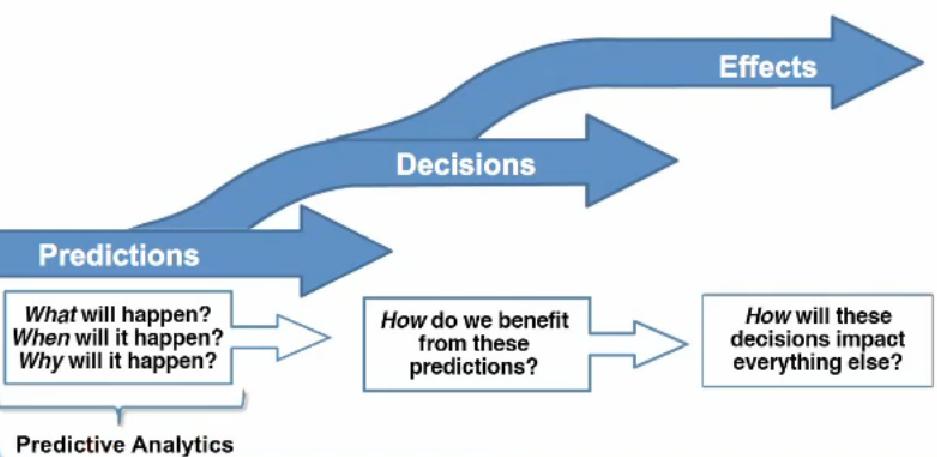Prescriptive Analytics Strategy
On 2 Apr, 2015 By Michael.Walker 1 Comments



Analytics comes in three (3) general flavors: descriptive, predictive and prescriptive. See: Predictive, Descriptive, Prescriptive Analytics.
Descriptive analytics describes the past and predictive analytics provides a probability of what might happen. In contrast, prescriptive analytics helps an organization evaluate different scenarios and seeks to determine the best course of action to achieve optimal outcomes - given known and estimating unknown variables.
Prescriptive analytics provides decision options and shows the likely impact of each decision option using probability theory.
To design and implement an effective prescriptive analytics strategy, an organization needs an information management strategy (including both internal and external data as well as both structured and unstructured data), a technology strategy and a data science strategy. The organization must invest in a team of data scientists to use sophisticated simulation techniques, machine learning and statistical algorithms for crunching relevant data and applying probability theory. The data science team works with leaders to design a prescriptive strategy for evaluating scenarios and making optimal decisions.
There are three types of data analysis:
- Predictive (forecasting)
- Descriptive (business intelligence and data mining)
- Prescriptive (optimization and simulation)
Increased compute speed, decreased data storage costs and recent development of complex algorithms applied to diverse data sources and larger data sets has made prescriptive analysis feasible and affordable for most organizations. Scientific techniques include data science (e.g., machine learning, algorithms, artificial intelligence, bayesian probability, monte carlo simulations...etc.), game theory, optimization, simulations, and decision-analysis methods.
Prescriptive analytics automatically synthesizes big data, mathematical sciences, business rules, and machine learning to make predictions and then suggests decision options to take advantage of the predictions.
Prescriptive analytics goes beyond predicting future outcomes by also suggesting actions to benefit from the predictions and showing the decision maker the implications of each decision option. Prescriptive analytics not only anticipates what will happen and when it will happen, but also why it will happen.
Further, prescriptive analytics can suggest decision options on how to take advantage of a future opportunity or mitigate a future risk and illustrate the implication of each decision option. In practice, prescriptive analytics can continually and automatically process new data to improve prediction accuracy and provide better decision options.
Prescriptive analytics synergistically combines data, business rules, and mathematical models. The data inputs to prescriptive analytics may come from multiple sources, internal (inside the organization) and external (social media, et al.). The data may also be structured, which includes numerical and categorical data, as well as unstructured data, such as text, images, audio, and video data. Business rules define the business process and include constraints, preferences, policies, best practices and boundaries. Mathematical models are techniques derived from mathematical sciences and related disciplines including applied statistics, machine learning, operations research, and natural language processing.
For example, prescriptive analytics can benefit healthcare strategic planning by using analytics to leverage operational and usage data combined with data of external factors such as economic data, population demographic trends and population health trends, to more accurately plan for future capital investments such as new facilities and equipment utilization as well as understand the trade-offs between adding additional beds and expanding an existing facility versus building a new one.
Another example is energy and utilities. Natural gas prices fluctuate dramatically depending upon supply, demand, econometrics, geo-politics, and weather conditions. Gas producers, transmission (pipeline) companies and utility firms have a keen interest in more accurately predicting gas prices so that they can lock in favorable terms while hedging downside risk. Prescriptive analytics can accurately predict prices by modeling internal and external variables simultaneously and also provide decision options and show the impact of each decision option.

Comments
TrinidadHPipkins
Sat, 2018/09/01 - 4:03am
Permalink
Re:
Thanks for the great post.